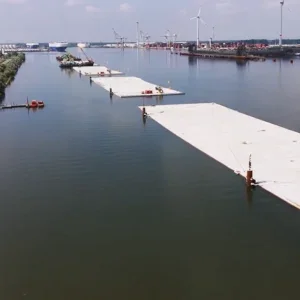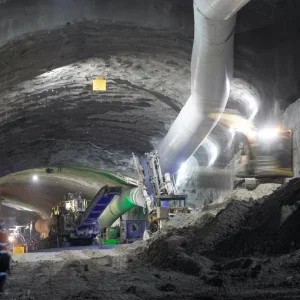Bradley Gill, from Queens, New York, is a NYC Sandhog. The Sandhogs are miners that build New York’s tunnels, whether train, water or the footings of bridges. "Anything deeper than a grave in New York – we build it," he says.
In the past five years he’s worked on the Seven Line Extension, Second Avenue Subway and, currently, the East Side Access project. Bradley describes his start in the tunnelling industry through the practice of ‘Shaping’, where workers show up at the job site to see if they are picked for the day. This could be because full-time workers called-in sick, are on vacation or if the bosses feel they need an extra hand.
"The first guys to get Shaped are guys who hold local 147 union books," he explains. "If they are all picked then guys who try to get enough shifts to get a union book will be picked. Everyone shapes at some point in their career; it’s just the way it goes. When someone gets shaped it’s their time to prove themselves and try their best to work as hard as they can to make a name for themselves. They do this hoping that they will continue getting Shaped.
"I remember my first time going into the hole. I was picked at 6:50 a.m. I was rushing and nervous to get changed as soon as possible. I rushed out of the Hoghouse and ran over to the top of the shaft. Then a few other guys and myself entered the cage, which was connected to a crane, and were lifted way above Northern Boulevard. The sun was just beginning to rise and was blinding as we slowly began being lowered down into the shaft. This is where the trains would bring us deep into the tunnel.
"The job is not for the faint of heart or people who are scared of heights; I realised this that day. I stepped out of the cage and could see the trains in the distance but they had left already. So off I went on my 2.5- mile [4km] walk deep down under the East River. That was probably the longest, darkest walk of my life.
"The excitement was flowing through me so I jogged the whole way. By the time I got to the Robbins TBM I was physically exhausted from jogging to the work site and I hadn’t even started work yet.
"They say your first day will make or break you in the tunnel and it definitely made me because the work was muscle-tearing tough. Now a few years later I have worked on three of the biggest tunnel jobs in America. There’s not a day that goes by where I don’t think of my first day Shaping. I see new guys doing it and I see the same look on their face as they enter the tunnel for their first time that I had."
The Sandhogs work around the clock in three shifts, and every day their duties are different. An average day in the tunnel could range from spraying shotcrete, to drilling holes to load dynamite for blasting, and actual blasting. Currently, on the East Side Access, they are building elevator and escalator shafts, which is increasingly problematic, Bradley says. "All the work we do is on a 30-degree angle. Another problem is we are a little under a 100ft [30.5m] from the Manhattan sidewalks or skyscrapers that hold up New York City’s skyline. On the escalator shafts no dynamite can be used until we progress deeper down so there is no disturbance of the structures above us.
"Instead of dynamite, we use something called daymite. Daymite is a powder that when mixed with water, activates, expands and breaks the rock. It has been called ‘liquid dynamite.’"
Working in New York means dealing with hard rock and, like all tunnelling jobs, carries the risk of injury or even death. "The hardest job by far was the Second Avenue Subway job. The rock was so bad we were mining through it and were worried about collapses. We would have to reinforce every 5 or 10ft [1.5 or 3m] because of voids."
He adds: "For people just getting into the tunneling business I would tell them safety comes first and to watch out for your fellow coworkers. Sometimes one person might see something that others don’t so it’s very important to speak up.
"It’s far from easy work so we all have to watch each other’s backs 24/7. A man had died for every mile of tunnel built in New York City, so that right there shows you the risks we have to be aware of."
Among other traditions, the Sandhogs hold a huge picnic every July in Upstate New York. "It’s a great feeling to take off the hard hats and the mud-soaked muck boots and just have everyone get together with their families. We eat good food, have a few drinks and just spend time outside of work. Sometimes when I see people at the picnic I don’t recognise them without their hard hats. It’s a nice to take a step back.
"Overall the best part about being a Sandhog is the fact we mine through rock and we go places that no one ever in the world has been to," he says. "We are truly the first. I can pick up a rock from the ground and just wonder how many millions of years it has been here.
"When people walk or take trains through these tunnels they will never think of the hard work, blood and sweat that the Sandhogs put into building these tunnels so their lives could be more convenient," Gill says. "It’s not the men who work in offices or who work on Wall Street who build New York — it’s the Sandhogs under the city, who most people don’t even know about."







